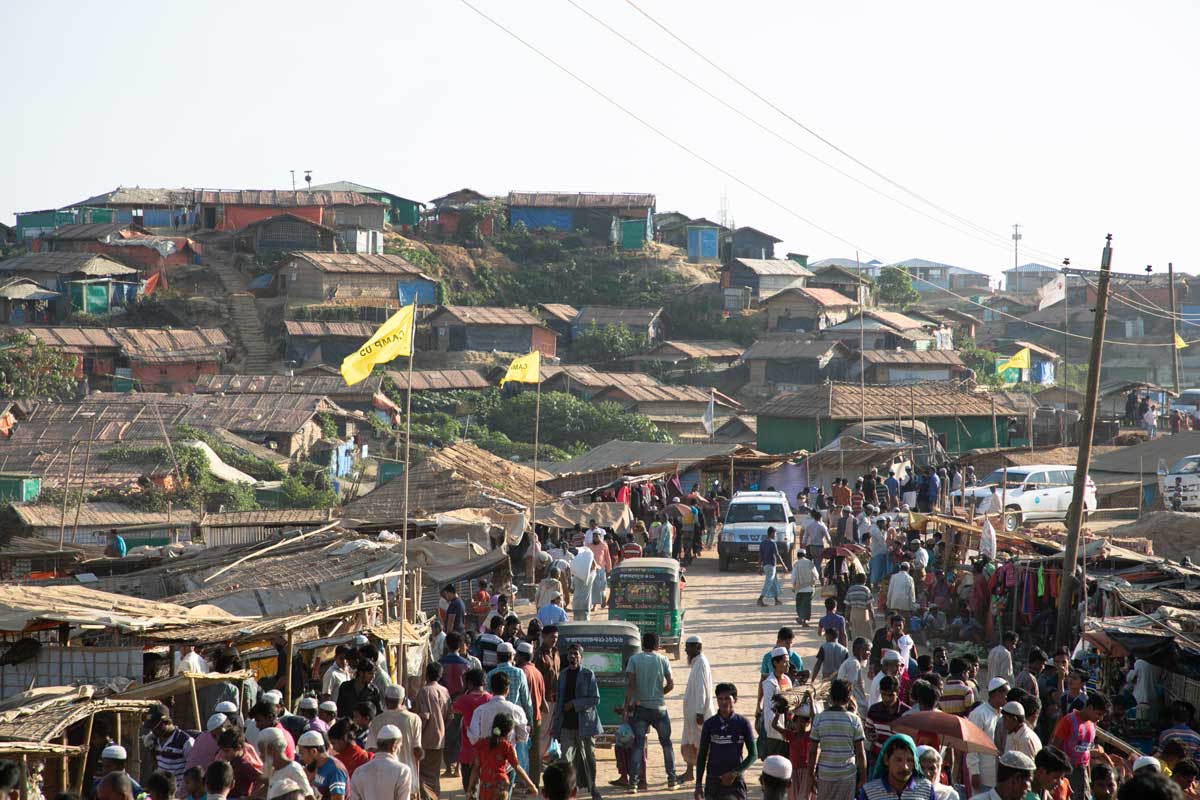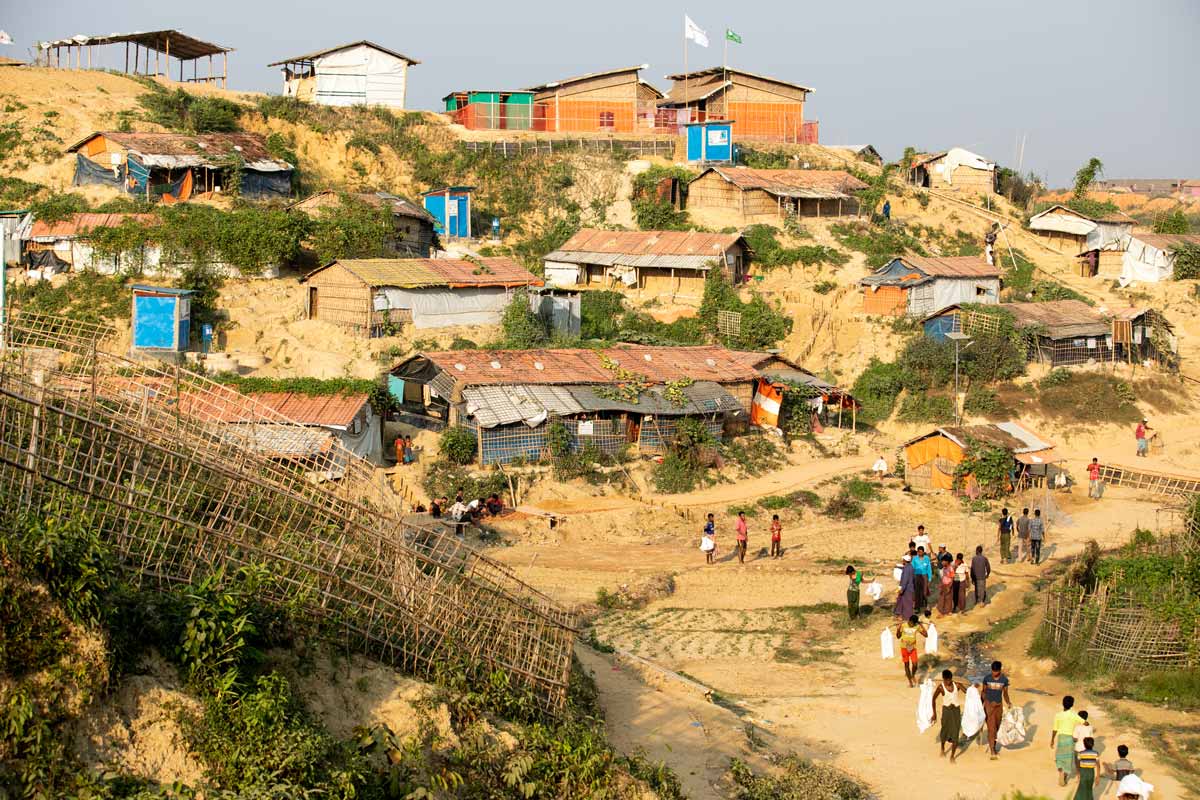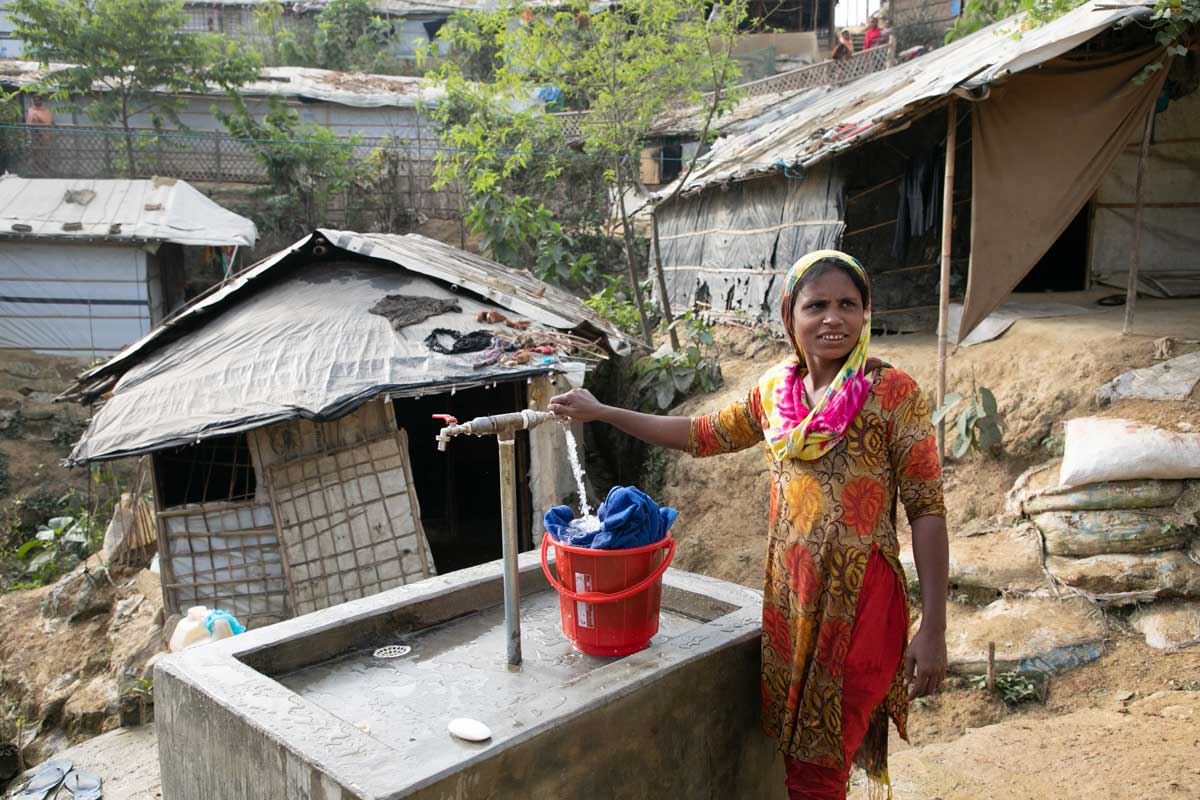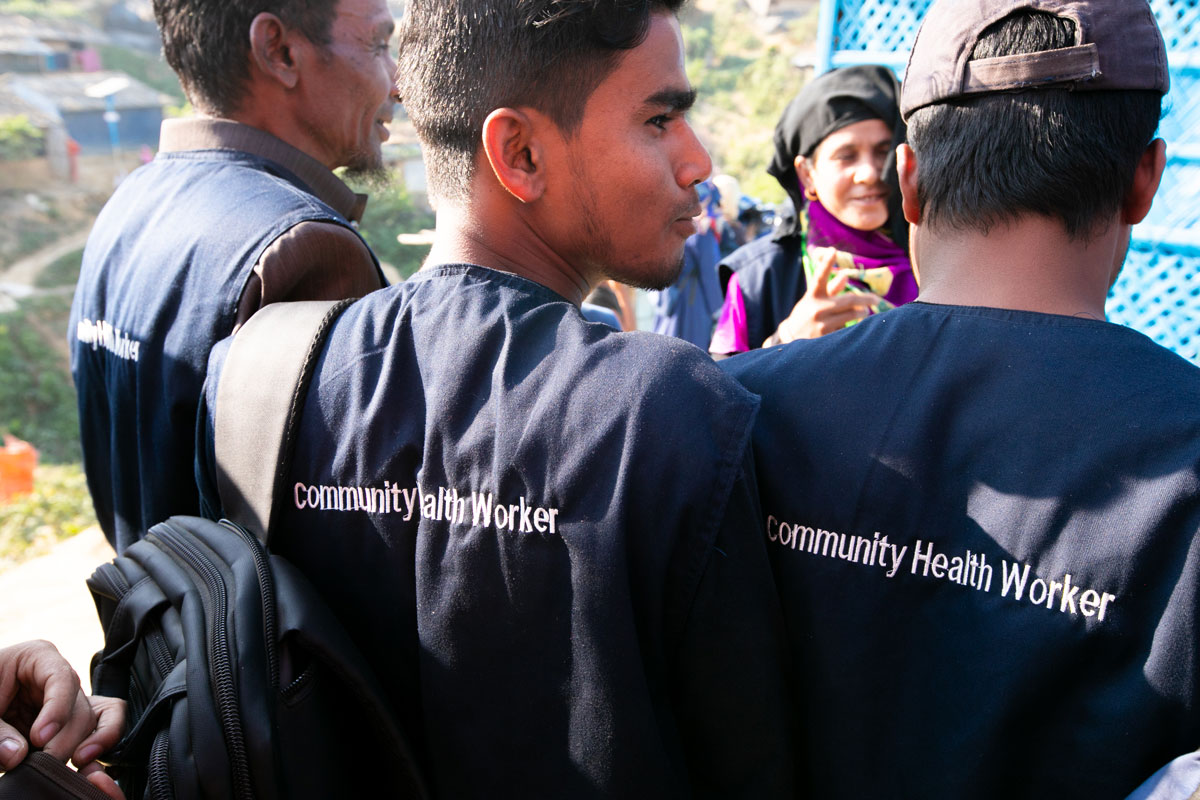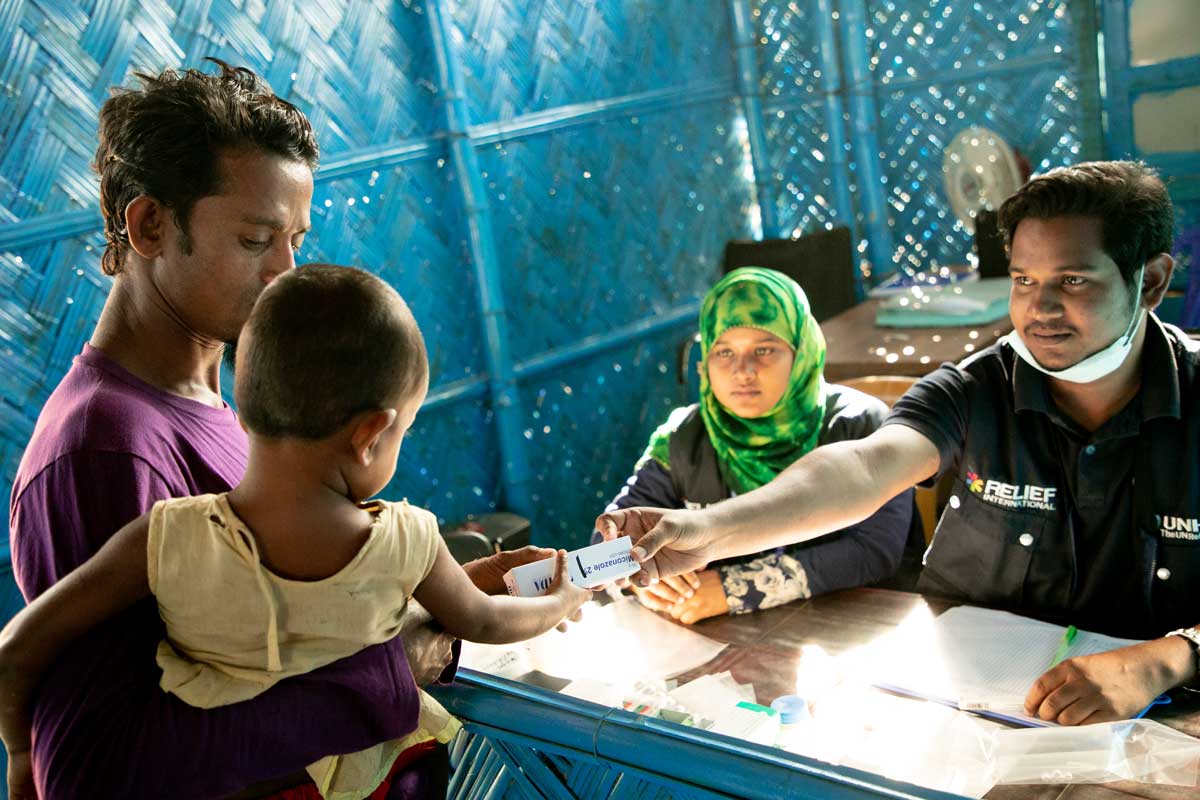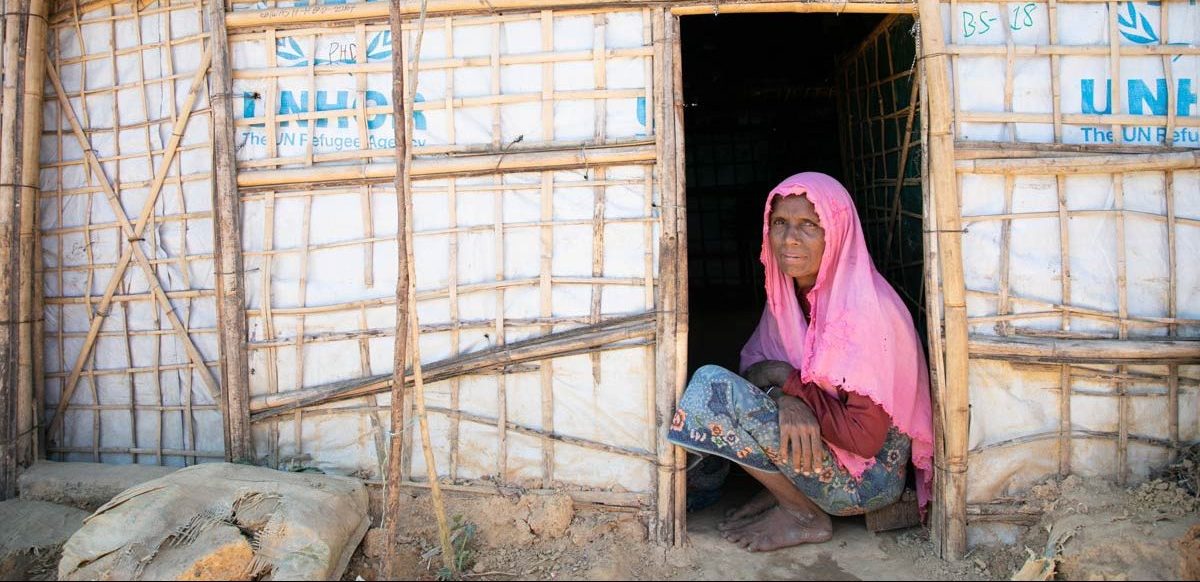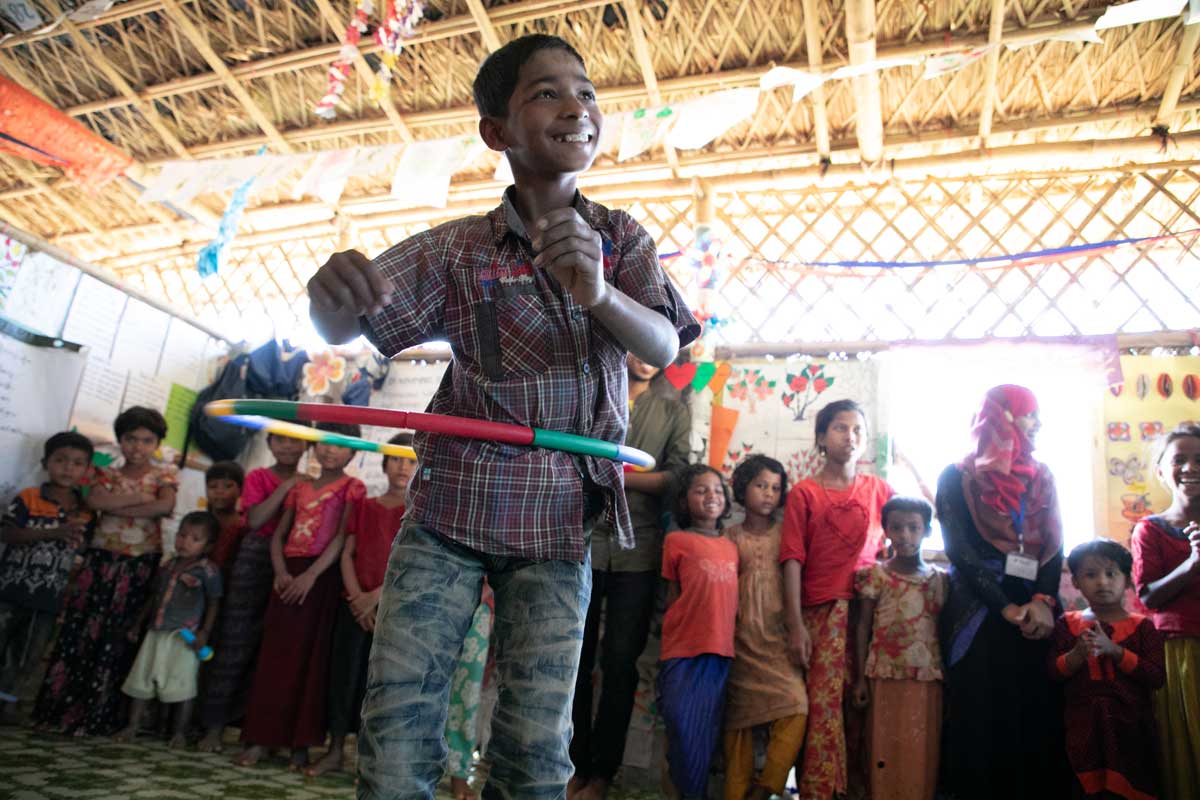Driven from their homes by renewed persecution, more than 750,000 Rohingya refugees scrambled across the Myanmar border into neighboring Bangladesh in late 2017.
The latest arrivals join thousands more Rohingya in Cox’s Bazar who fled previous eruptions of violence against them in the 1990s. Combined with the existing refugee population, nearly one million Rohingya refugees live in Bangladesh today.
It can be difficult to picture life inside Bangladesh’s Kutupalong refugee camp, which doubled in size in the first six months. The sprawling, overcrowded camp spans more than 3,000 acres and is home to multiple generations of Rohingya refugees, many of whom have been displaced two or three times in their lifetime.
With no foreseeable end to this crisis, Relief International’s programs continue to support the diverse needs of hundreds of thousands of the most vulnerable Rohingya. Our photos offer insight into these refugees’ daily life and the essential services we connect them to inside the world’s largest refugee camp.
While most of the newly arrived refugees settled in Bangladesh’s Kutupalong refugee camp, some established themselves farther south in Teknaf, one of the poorest and most underserved districts in Cox’s Bazar. Here, refugees have even less access to basic services than those who live in the camp.
Bangladeshis initially welcomed the Rohingya by the tens of thousands into their homes and communities. However, as the crisis drags on, it is evident that the rapid influx of refugees into this poor area of Bangladesh adds a significant strain on communities’ already overstretched resources. We’ve expanded our health services in Teknaf to include members of the host community that face vulnerable situations, helping to reduce tensions between the host communities and the displaced.
As the crisis enters its third year, refugees inside the camp continue to rely on humanitarian aid to meet all of their most basic needs. We must continue to develop new programs to support the diverse needs of the most vulnerable Rohingya refugees that live in areas cut off from key services and the host communities that support them.
